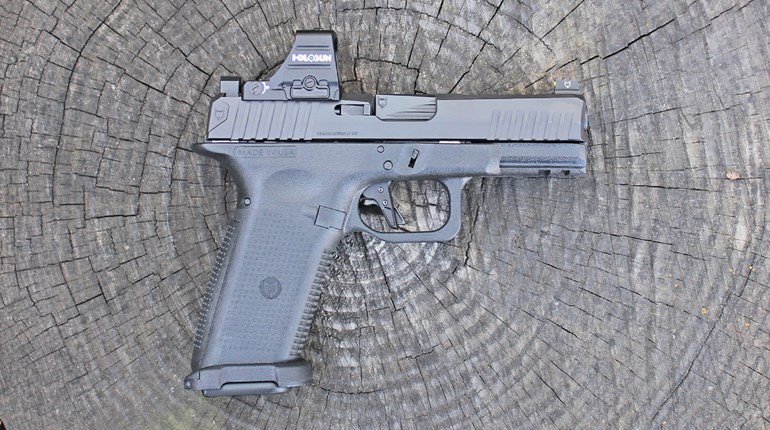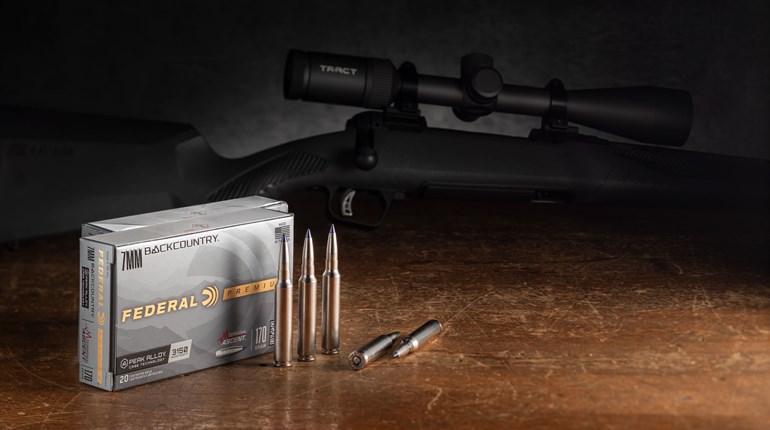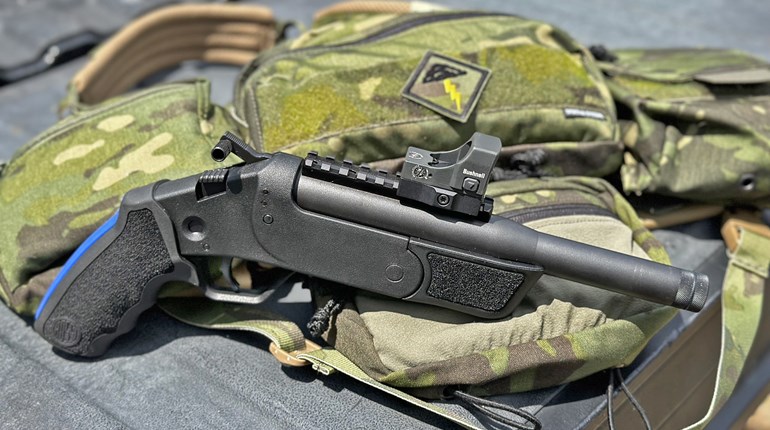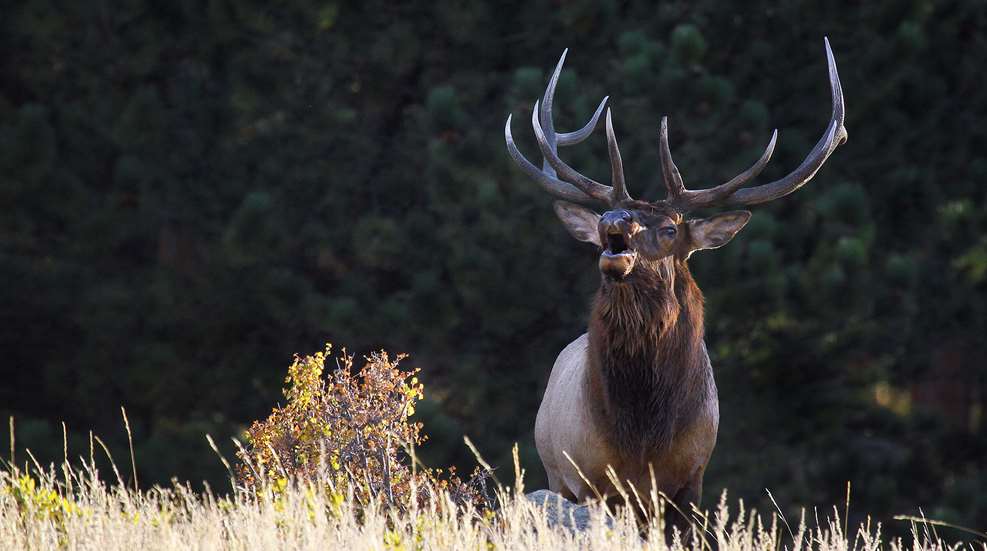
No one outruns Father Time. The idea is to prolong the race as long as possible keeping the old tyrant located in your rearview mirror while you enjoy doing all the things you dreamed of doing back when you were working your day job. Obviously as skills deteriorate you must tailor your activities commensurate with your remaining capabilities. You don’t concede the race you simply modify your tactics and techniques while maintaining focus on your dreams. Which brings me to the subject of elk hunting: specifically handgun hunting elk.
In 1976 I moved to Colorado and began shooting handgun metallic silhouettes. At that time Colorado did not allow elk hunting with handguns, so despite my total fascination with hunting handguns, my first elk (a cow) was taken with a Winchester Model 70 chambered in .300 Winchester Magnum. It was delicious but lacked the enhanced flavor that accompanies an animal harvested with a handgun. When handguns became legal for big-game hunting in both Colorado and Wyoming, I made the commitment to hunting with big-bore handguns and spent the next several years trying to find an elk and stalk within handgun range. All of these hunts were self-guided; i.e., I went camping with a bunch of friends every fall and wandered about the mountains hoping to get lucky. Despite my lack of success, the trips and resulting memories were fantastic! It wasn’t until I went on a guided horseback hunt with Wolfe Creek Outfitters in western Wyoming in the ’90s that I finally took a spike bull with a single-shot XL pistol chambered in .356 Winchester.

Fast forward another 20 years filled with work in various marketing endeavors, gun writing and a variety of hunting and shooting trips leading up to my retirement from the 9 to 5 daily workplace. While numerous animals fell to various big-bore Freedom Arms, S&W and Ruger revolvers, that spike bull remained my only elk trophy. Until I reached my mid-70s, when my good friend Dave Sturm, the hunting operations manager for Spur Outfitters in Wyoming and Colorado, invited me to join him at Spur’s ranch in Walden, Colo., for an elk hunt. I could still climb up and down a hill if it wasn’t too steep, but not more than a couple of hills a day. The deal was irresistible: ride around with him in a truck while he checked on other hunters on the ranch; if we spotted anything that looked manageable, I could make a stalk. Dave and I had spent a lot of fun time together in trucks handgun hunting varmints over the years, and I knew firsthand that his 20/20 vision was on par with antelopes and eagles. It was clearly a perfect, and perhaps my last, opportunity to take a bull elk.
My handgun of choice was a long-time favorite: a large-frame, long-barreled Freedom Arms Model 83 chambered in .454. I’d had it for almost a quarter of a century and successfully taken antelope, deer and wild boar with it. The gun began life with a 10-inch barrel topped with a low-power pistol scope. Ken Kelly at Mag-na-port cut the barrel to 8 inches and fitted it with a screw-on Mag-na-port muzzle brake. To this day it is difficult to see the line where the barrel ends and the muzzle brake begins. Ken also did some serious polishing on both the inside and outside of the gun, plus he installed sling studs on the base of the grip frame and the underside of the barrel. With a shortened sling attached, the .454 was handier than a large holster for short forays/stalks from a truck. The Freedom Arms revolver and I lacked the precision of a deployed SEAL team, but we had worked well together and become reasonably proficient over the previous 20-plus years.
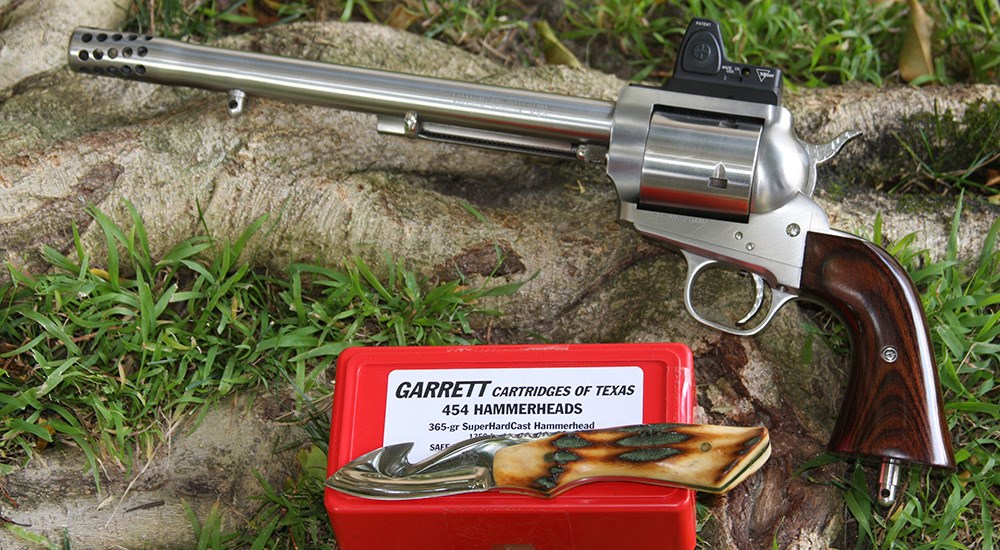
My ammo selection criteria had changed over time to reflect the current mission. Elk are tougher critters than deer and antelope, and while the original 240-grain to 300-grain jacketed .454 hollow-points produced higher velocities and flatter trajectories within reasonable handgun hunting ranges, I choose hard-cast, heavyweight bullets to deal with the enhanced stamina of elk and the gristled armor plate of large boars. For this hunt I was using Garrett Cartridges of Texas 365-grain slugs with a large meplat that left the muzzle at a velocity of 1350 fps. I’d also replaced the pistol scope with a Trijicon red dot since I didn’t feel I’d need magnification, and alignment of the gun with the target is much simpler looking through the short window of a red dot than working with the longer tube of a scope.
As it turned out, the weather was beautiful on the opening day of elk season: below freezing at first light but crystal clear and no snow. In between stops to offer advice and assistance to a couple other groups of hunters on the ranch, we glassed the area from various vantage points.
That in itself was spectacular, as we saw two different moose working their way through some willows and one herd of cow elk passing through the timber. Finally Dave spotted a small herd of five bull elk with two 5-pointers a ways off, winding through some willows.
There’s no substitute for being intimately familiar with the local terrain. Dave drove us to a valley adjoining the small elk herd’s location and we climbed the one hill between us.
We stopped on top of the hill gazing down across a clearing into the thick willows about 150 yards away. Dave whispered for me to get ready and he would try to call them out. I propped open the legs of my lightweight pack and assumed the Elmer Keith field position with my back braced against the pack and my knees pulled up toward my chest. I extended the long-barreled Freedom Arms .454 Casull with the Trijicon optic, braced my forearms on my knees and settled into a rock solid position. When I was set, Dave began to make magic!
He didn’t pull out a battery-powered tape player or a long-tubed elk caller or even one of the small “chirpers” you insert in your mouth. He just started making “sexy cow elk” small talk! And the results were instantaneous. The bulls stopped, turned their heads and listened. If the group seemed to be losing interest, Dave started talking again. Finally one of the 5-point bulls took a couple of steps from the willows and stood staring toward us. Dave’s dialog continued with the bull taking several steps up the hill in our direction and stopping to listen and look. Dave was not only talking the bull into joining us for a visit, he seemed to be reading the bull’s thoughts, or more appropriately, his body language. When the animal closed within 90 yards, he was obviously beginning to lose interest and showing an inclination to return to the herd.
Dave whispered, “If I can turn him broadside, take him.” One more chirp worked, and I sent one of the 365-grain hard-cast bullets into his chest. Dave quickly said, “Good shot. You double-lunged him. Don’t let him get back to the willows. I’m going to get the truck.”
There are certain problems that occur with senior citizen hunters that are unique, and this is a good time to mention one. In 18 years of attending events at Gunsite, one thing I had learned is the importance of follow-up. In dealing with a life-threatening situation, recovery for a follow-up shot is extremely important, and it’s equally important in hunting. If the threat is not neutralized with the first shot, you must be prepared for a second, and perhaps third shot to end the encounter. Mentally I was prepared for a second shot on the young bull elk. Unfortunately I had failed to fully tighten the Tenzing pack’s support legs, so the .454’s recoil rocked me back far enough to partially collapse the legs of the pack.
Instead of being in Elmer Keith’s preferred field support position, I found myself in the Neanderthal astronomer’s semi-reclined position gazing in awe at the heavens! Fortunately I called upon the long-retired reflexes I had as a 30-year-old and pulled myself back into Elmer’s preferred posture. It wasn’t perfect, but it was steady enough to allow reasonably placed follow-up shots.
The bull hunched with the first hit but did not change position. I hit him broadside again before he turned and started walking slowly and painfully back down the hill. I had two more rounds in the gun (you always carry a Freedom Arms Model 83 with an empty chamber under the hammer), and since I knew the bull was mortally wounded, I fired twice more to ensure we did not have to go into the thick brush after him. He went down for good about 10 yards short of the willows.
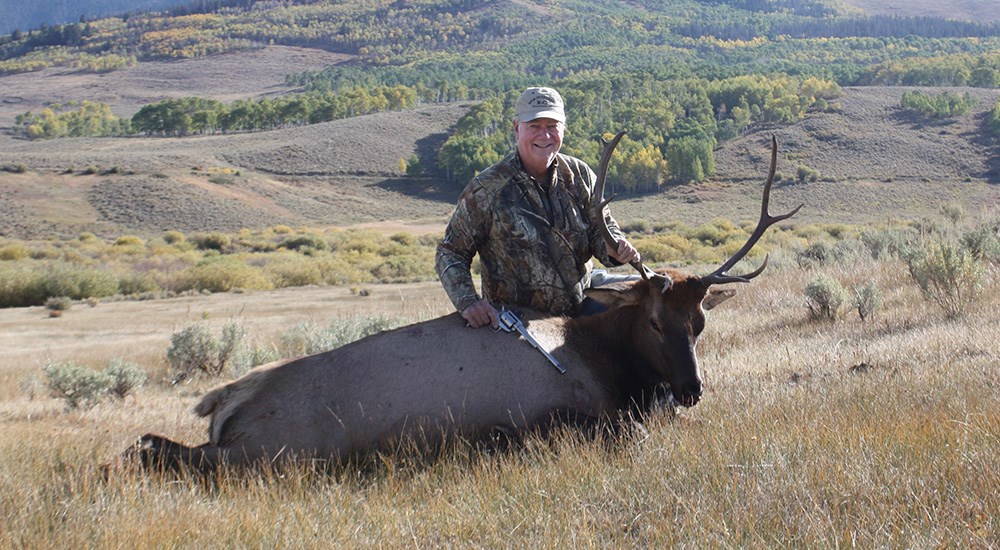
There were a myriad of thoughts racing through my mind as I stood looking down at the young bull. There was the usual sadness that accompanies the taking of any animal in its prime, particularly one as splendid as an elk. And yet there’s something incredibly special about fulfilling a 40-year dream like taking a mature bull elk with a revolver. I was flooded with memories of all the hunts, both successes and failures, since my mid-30s. It was a feeling of massive satisfaction, particularly since I knew this might be my last free-range big-game handgun hunt.
There was a sense of urgency to get the elk to the butcher and packaged for the 1,000-mile trip home. This was the first day of elk season and the meat packing plant would soon be filled with harvested elk to process and freeze before all the hunters were ready to leave. Dave had recommended North Park Meat in Walden for complete service on game animals. The elk was delivered to the shop by early afternoon, then butchered, packed and frozen for my trip home within two days. Fantastic service!
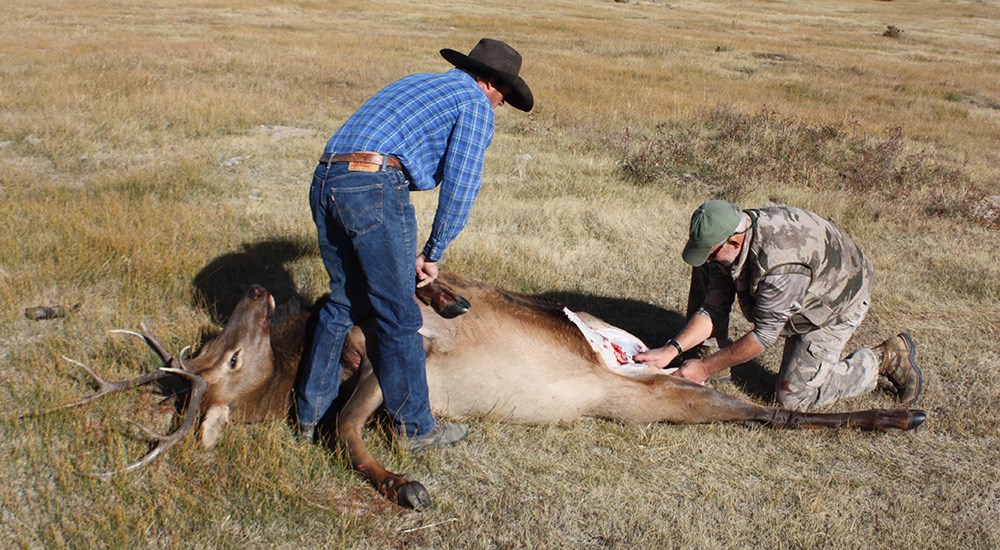
The next two days turned into a delightful holiday. Another long-time friend had booked the Spur for an elk hunt and was staying at the lodge. Il Ling New was the first (and for several years the only) woman instructor at Gunsite Academy. She was one of the instructors in my first defensive pistol class at Gunsite more than 10 years earlier. Unlike many of the instructors at Gunsite, Il Ling had been a big-game hunting guide before beginning her career at the academy. During our first week together, she strove mightily to rid me of my many bad shooting habits while I tried to convince her that handgun hunting was the only real way to harvest big game. Although she did vastly improve my defensive handgun skills, I still have many of my “self-taught” bad habits. On the flip side, Il Ling was using a Ruger Super Redhawk in .454 Casull for this elk hunt. I’m claiming a win on this one!
The trip home was uneventful, the kind of trip I much prefer at my age. The weather stayed mild for my trip down from Colorado’s high country. A phone call to a meat processor in Utah gained me overnight freezer storage in exchange for a couple of elk roasts and some sausage. Dealing with friendly folks makes every trip more pleasant.
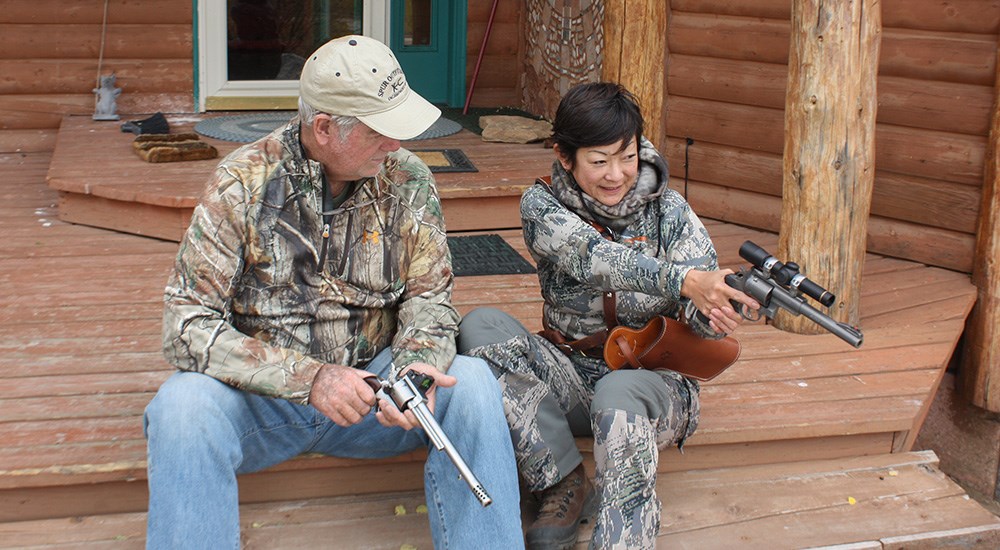
The elk meat is long gone by now, but the memories linger and are treasured. Will the Spur turn out to be my last free-range handgun elk hunt? Quite possibly, since my hunting these days occurs mostly from blinds with perhaps a short stalk at the end. But Jason Burke, the Spur’s new hunting operations manager, knows all the secret elk paths and hideaways on the spectacular Colorado ranch. It’s remotely possible there might be one more hunt involving a short walk from a dirt road to a known trail followed by a few hours enjoying the beauty of the Rocky Mountains from a comfortable field blind. I don’t think I can wait another 40 years, but like they say, “Anticipation is half the fun!” And I’m still having fun!













